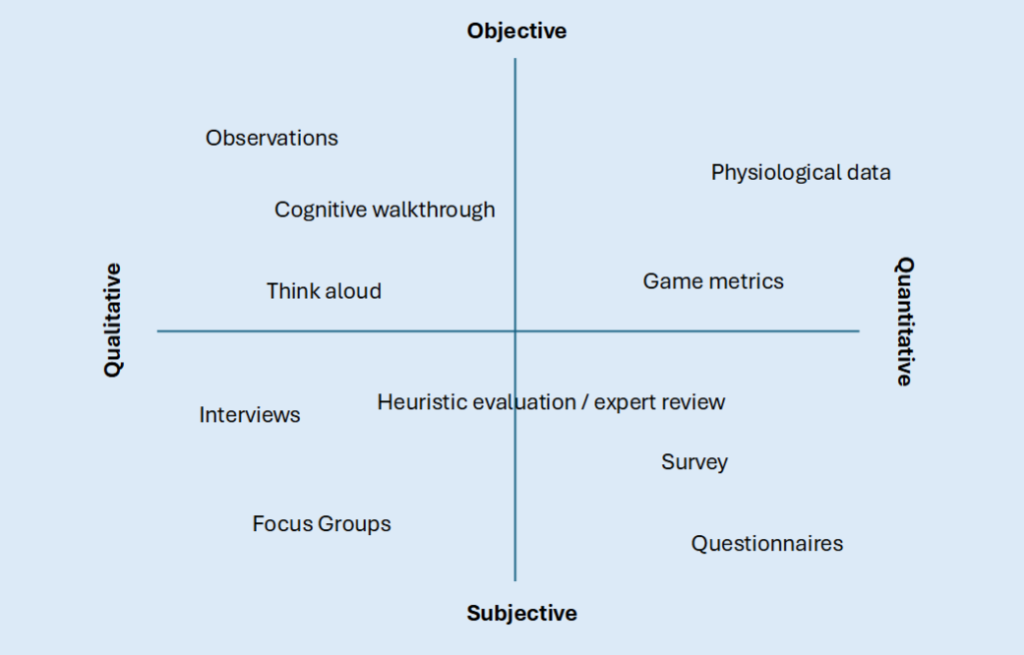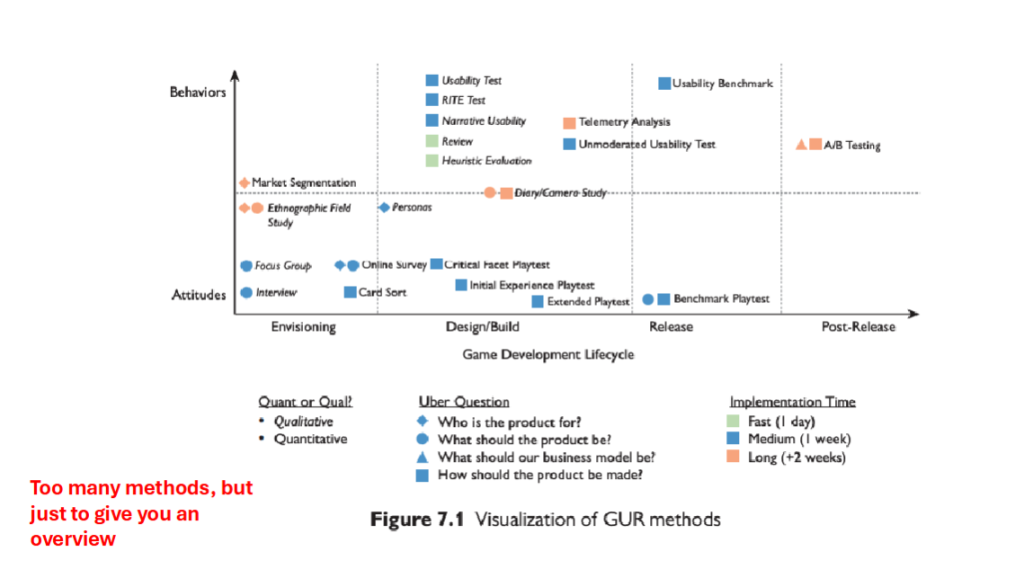Games User Research is an academic area that is built around understanding what motivates a player, how their actions can be explained or predicted and capture new data about players to help further game design ideas.
It merges various fields of study such as psychology, ergonomics, UX, Interaction design and many more.



Interviews: To understand about the players’ perceptions, opinions, beliefs and attitudes about a game or game experiences.
Survey: To assesss the attitudes and perceptions users have on a wide variety of topics.
Observations: To understand how players deal with the game’s challenges. Where they get stuck or frustrated in the game.
Expert review: To understand small issues in the prototype.

It is important to communicate all of this back to a team and to do this you need to analyse the collected data -> report the severity of the data -> work out how you can set new goals in the backlog and how they can be achieved.
You technically don’t need a playable build to run usability analysis. It is all about the smaller aspects of a project. The usability of the controls, for example, how a player interacts with these and the limitations. For example, in an FPS, you have better control over the speed of the player with a controller with a downside of worse aim. With a keyboard and mouse, you have better aim with (normally) static inputs on the movement.
- Visibility of system status
- Match between system and the real world
- User control and freedom
- Consistency and standards
- Error prevention
- Recognition rather than recall
- Flexibility and efficiency of use
- Aesthetic and minimalist design
- Help users recognize, diagnose, and recover from
errors - Help and documentation
https://www.nngroup.com/articles/usability-heuristics-applied-video-games/
What is the purpose of Usability Expert Analysis?
To identify specific aspects of the game that could contribute to issues with player understanding and usability.
Expert review is a process for structured evaluation seeking flaws, strengths and opportunities in design.
Activity
Critical Issues:
- Room generation
- If the room generation is not fully functional by the playtest, there is a chance the level will not be completable, and thereofre the player cannot complete the game.
- Player movement
- The player needs to be able to do the bare minimum of being able to move around the rooms
- Player attack
- The player needs to be abe to do the bare minimum of being able to deal damage to an enemy
- Enemies
- enemies don’t need to have attack patterns or even move! They just need to be able to spawn in a room and be attatcked and ‘die’ to the player
Serious Issues:
- Enemy movement
- If enemies are static, player may get bored and stop playing the playtest.
Minor Issues
- Level layouts
- Level layouts don’t need to be interesting or fully realised at the moment, players may find the test a bit dull, but this won’t stop them completing the play test.
- Sprite work
- All sprites don’t have to be complete. We can use temp work or placeholder imges instead.
- Advanced mechanics
- Whilst advanced mechancis may be nice to show off, if they are incomplete it will not affect the playtest that much.
What are the goals of our Playtest?
- Room generation feel
- Player interactions with rooms
- Player attack move cycle
- How fast players want to/feel they should be able to move through rooms
Data can be collected through direct feedback in the form of notes or in a form that can be filled out with very direct answers.
Leave a Reply